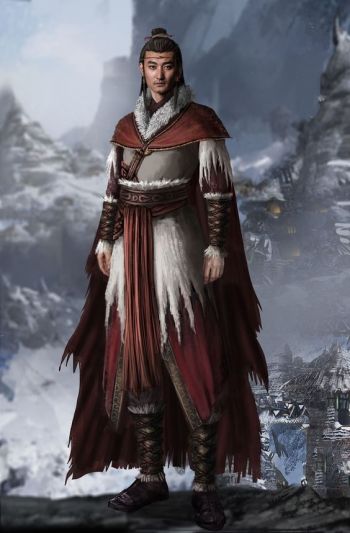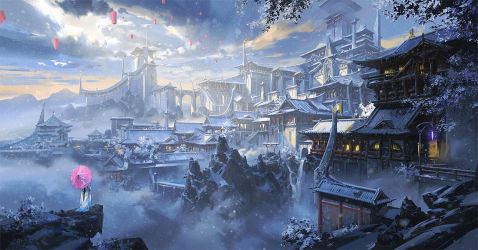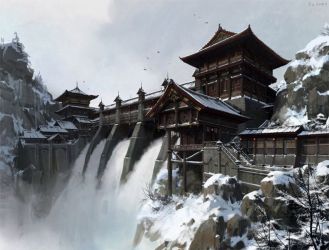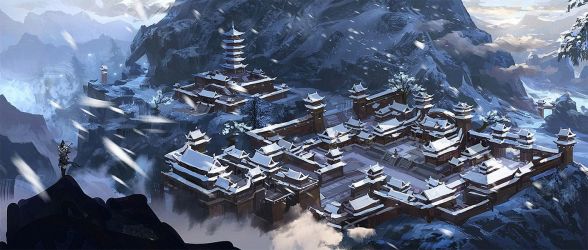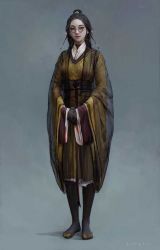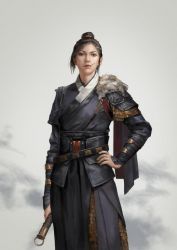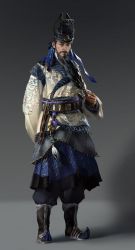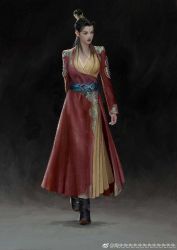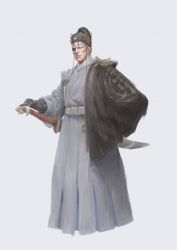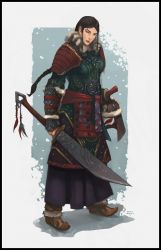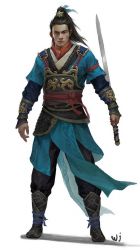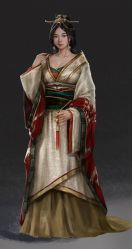Changes: Sim Layout, City-States, RPCSS Factions, and Storyline. Read More
Khonzhou
From The Citadel
Khonzhou is intended to be a multicultural asian city that borrows heavily from Mongolia and Northern China. Further fantasy elements have been gleemed from The Dothraki, The Last Airbender, and the Empire Series by Raymond Feist.
Khonzhou lies in the northeastern corner of the Essealas continent. The city is an architectural marvel, which like most of the northern cities, covers most of the mountainside. Below the city is a bustling sea port and lower villages. The steppes lie between the dark pine forests of Halberg and the murky woods of Fendahl. Complex stone buildings with multiple tiled hip rooves soar many towers over narrow streets. Beautifully polished and lacquered woods with paper dividers create elegant interiors.
Fish, soybeans, and rice are a staple of cuisine in Khonzhou, only one of which is produced locally. Tribute in the form of guaranteed trade has been established with Fendahl for soy and other beans, and rice from Tenysia. In exchange, Khonzhou exports both northern caught fish such as tuna and swordfish and cattle from the steppes.
- Personality
The Jurchen are a reserved people who hold public displays of emotion to be weak and dishonorable. A Jurchen, like his Hunnic ancestor, believes themselves to be the descendant of warriors. Honor is due to ones family, one's Khan and one's gods. Dishonor is avoided at all costs. There are eight banners left of the Hunnic empire, with the white banner in the current position as warlord and acknowledged leader of the Jurchen people. While there is an emperor, from the Jurchen side of the people's history, his authority is nominal, and the warlord, who wears the white, controls the politics and armies.
The eight banners, represent the eight oldest families and sit on the council with the warlord to establish policy. All Jurchen owe allegiance to one of these eight banners, though politics within a banner clan can differ from family to family.
While there is long-established trade with the Fenrii and Sythians, the Jurchen do not care much for either city-state -- the Fenrii are to strange, and the Sythian's are the source for most poisons used in Jurchen politics -- a practice the Jurchen abhor. Jurchen alliances change with the political winds and there has been no longer a unified empire since that of the Huns. An ancient distrust between the Jurchen and the Bretons and Alfarians exist.
- Appearance
The Jurchen are not a particularly tall people, rather they are lithe and swift. Their skin ranges from milk pale to sea-side swarthy. Their hair is typically black, though shades of brown, dark blonde of white have slipped in due to mixed marriages with the Rus, Alfarians, Fenrii and Sythians. They have dark eyes, while rare bright green eyes are favored -- a Zuberi influence perhaps?
The Jurchen traditional costume is comprised of felt hats, long jackets with loose sleeves, and practical baggy trousers. Yet, like all the rest of the city-states, the nobility are interested in the shifts of fashion, and a varied yet conservative selection of new styles greets the spring season each year.
- Traditions
The Jurchen follow a spiritual path known as the five ways or the five paths. This path blends their Hunnic pantheon with a more recent philosophy. The synthesis is an elegant and complex practice which tie the five elements to medicine, philosophy, divination and daily life. The five elements are earth, fire, wood, water and metal.
Toghtoga is the red god of war and the underworld. He is associated with metal. Samga is the goddes of fire associated with the sun, change, and chaos. Ebegei is the earth mother who brings the harvests and is known as the sleeper without dreams. Batukhan is the god wood and the protector of the sky. Dagasi is the moon goddess who rules over water, soft changes, healing and unity.
All five gods are worshiped equally but also based on the concept of generating and reducing; one might for example pray to the earth god to keep war from forming, pray to the metal god for success in war, and the god of water to end war.
This practice of wuxing is how the Jurchen keep their inner balance and understand their place within the world, this inner center is known as the waal. The Jurchen believe in reincarnation and intend by their actions in this life to earn a better life in their next incarnation. Burial customs include offerings to the gods for the next evolution, and burial goods to remind the person of their current station. Warriors and nobles have the right to die by throwing themselves on their sword, while the lowest and meanest slave death is by hanging. Death by poison is considered a terrible and dishonorable death.
- Expanded Lore
- Further reading and links for the culture obsessed.
Small Council NPCs
| Role | Description |
|---|---|
Ruler |
|
Diplomat |
|
Warlord |
|
Coinmaster |
|
Spy Master |
Phrases
- The Great Game
- A term for the cut-throat politics of Khonzhou society. The same term is also applied to the politics of the continent.
